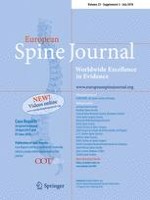Erschienen in:

08.08.2017 | Case Report
Anterior transarticular C1–C2 fixation with contralateral screw insertion: a report of two cases and technical note
verfasst von:
Ivan Lvov, Andrey Grin, Aleksandr Kaykov, Vladimir Smirnov, Vladimir Krylov
Erschienen in:
European Spine Journal
|
Sonderheft 3/2018
Einloggen, um Zugang zu erhalten
Abstract
Purpose
Anterior transarticular fixation of the C1–C2 vertebrae is a well-known technique that involves screw insertion through the body of the C2 vertebra into the lateral masses of the atlas through an anterior transcervical approach. Meanwhile, contralateral screw insertion has been previously described only in anatomical studies.
Methods
We describe two case reports of the clinical application of this new technique.
Results
In Case 1, the patient was diagnosed with an unstable C1 fracture. The clinical features of the case did not allow for any type of posterior atlantoaxial fusion, Halo immobilization, or routine anterior fixation using the Reindl and Koller techniques. The possible manner of screw insertion into the anterior third of the right lateral mass was via a contralateral trajectory, which was performed in this case. Case 2 involved a patient with neglected posteriorly dislocated dens fracture who could not lie in the prone position due to concomitant cardiac pathology. Reduction of atlantoaxial dislocation was insufficient, even after scar tissue resection at the fracture, while transdental fusion was not possible. Considering the success of the previous case, atlantoaxial fixation was performed through the small approach, using the Reindl technique and contralateral screw insertion.
Conclusions
These two cases demonstrate the potential of anterior transarticular fixation of C1–C2 vertebrae in cases where posterior atlantoaxial fusion is not achievable. This type of fixation can be performed through a single approach if one screw is inserted using the Reindl technique and another is inserted via a contralateral trajectory.